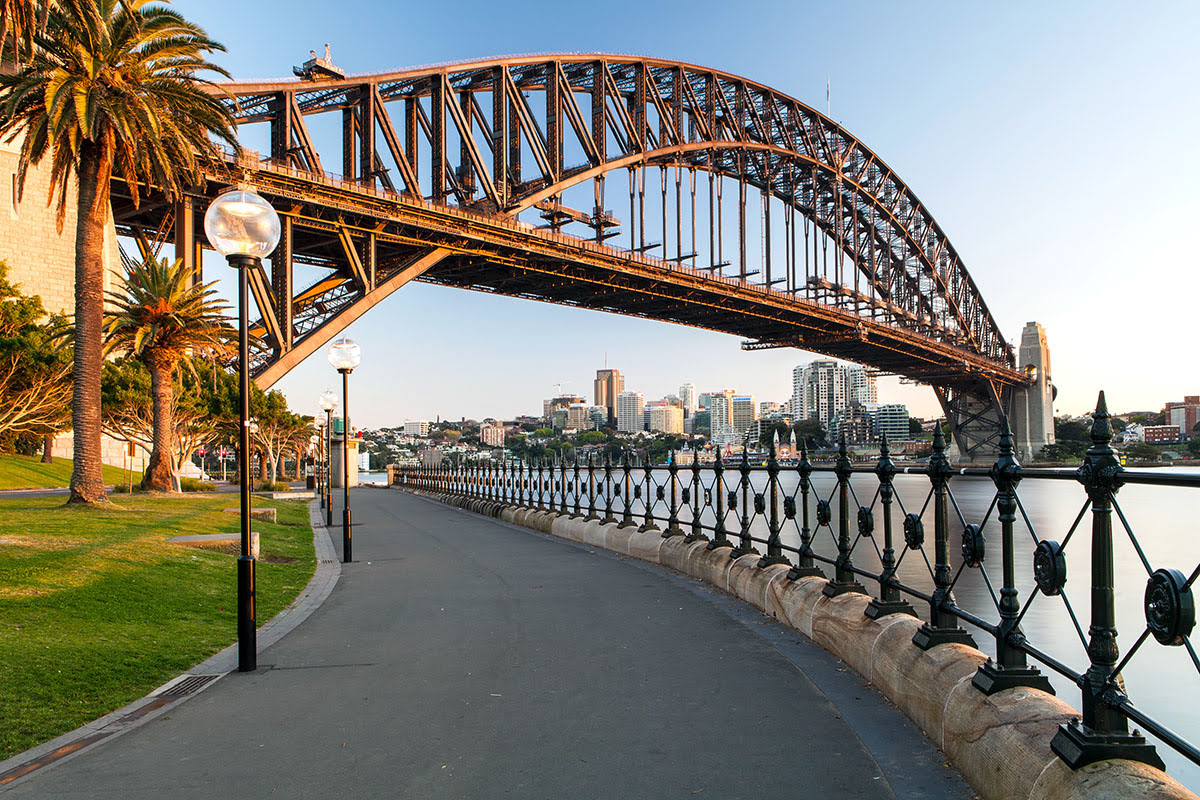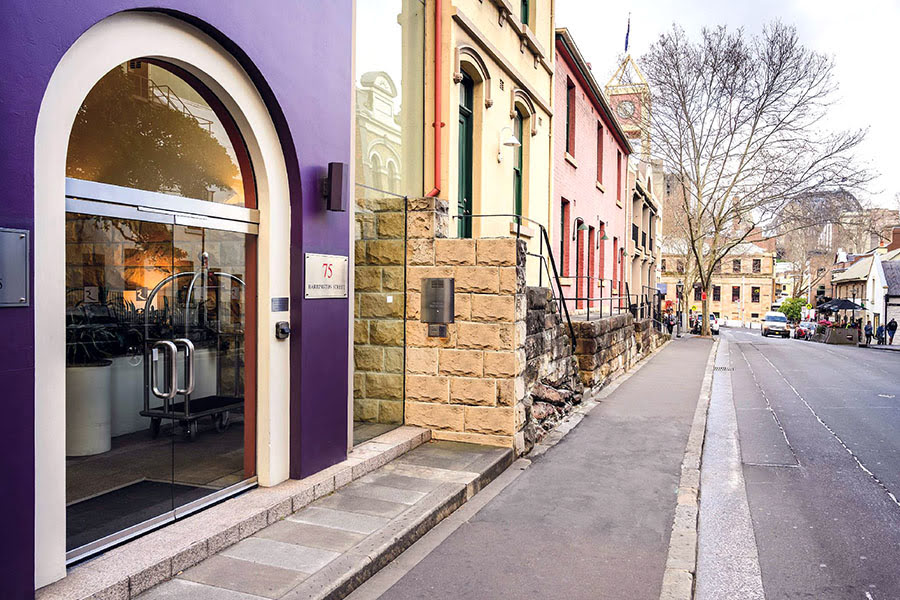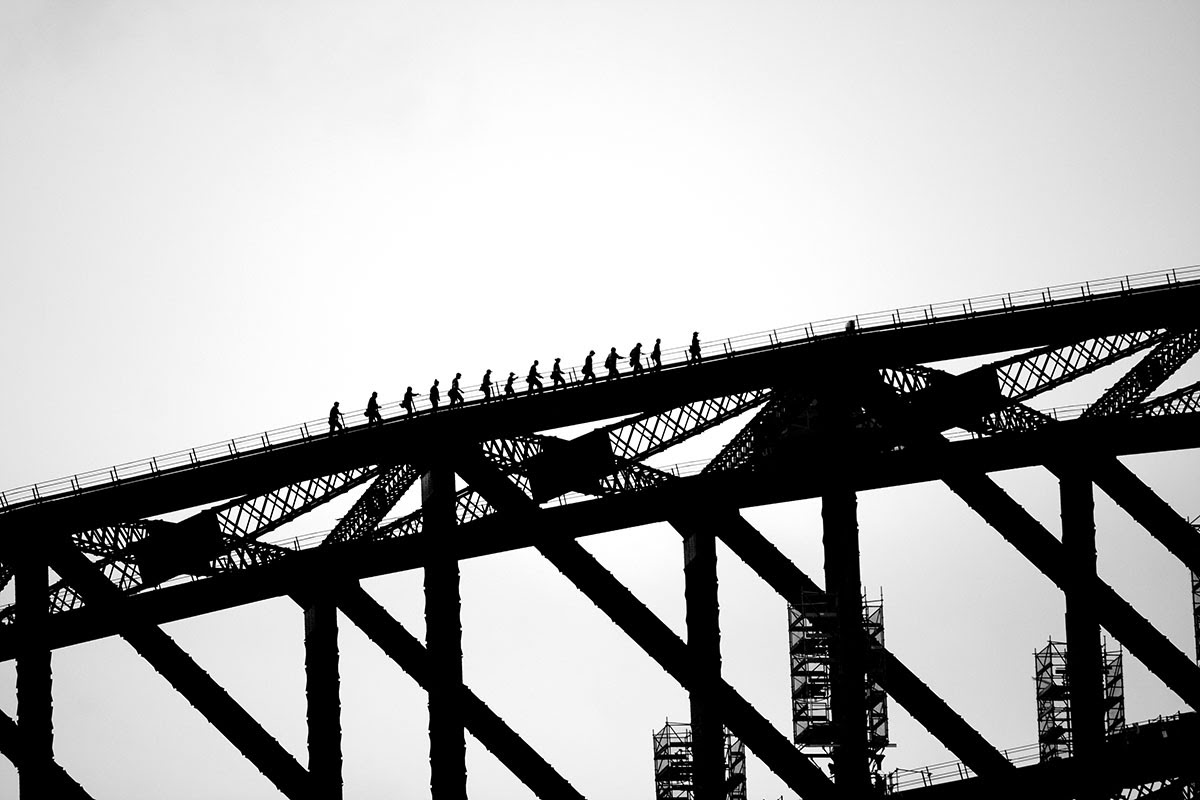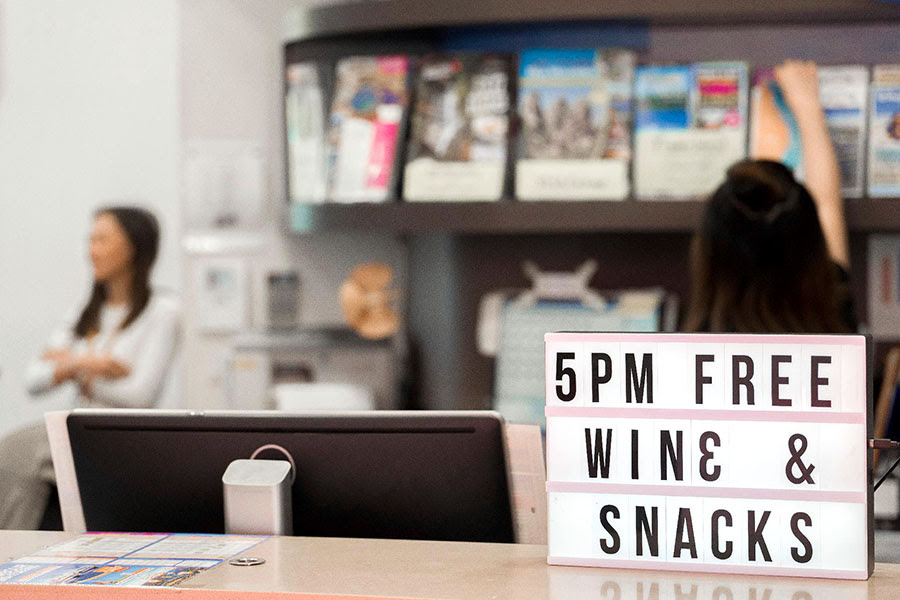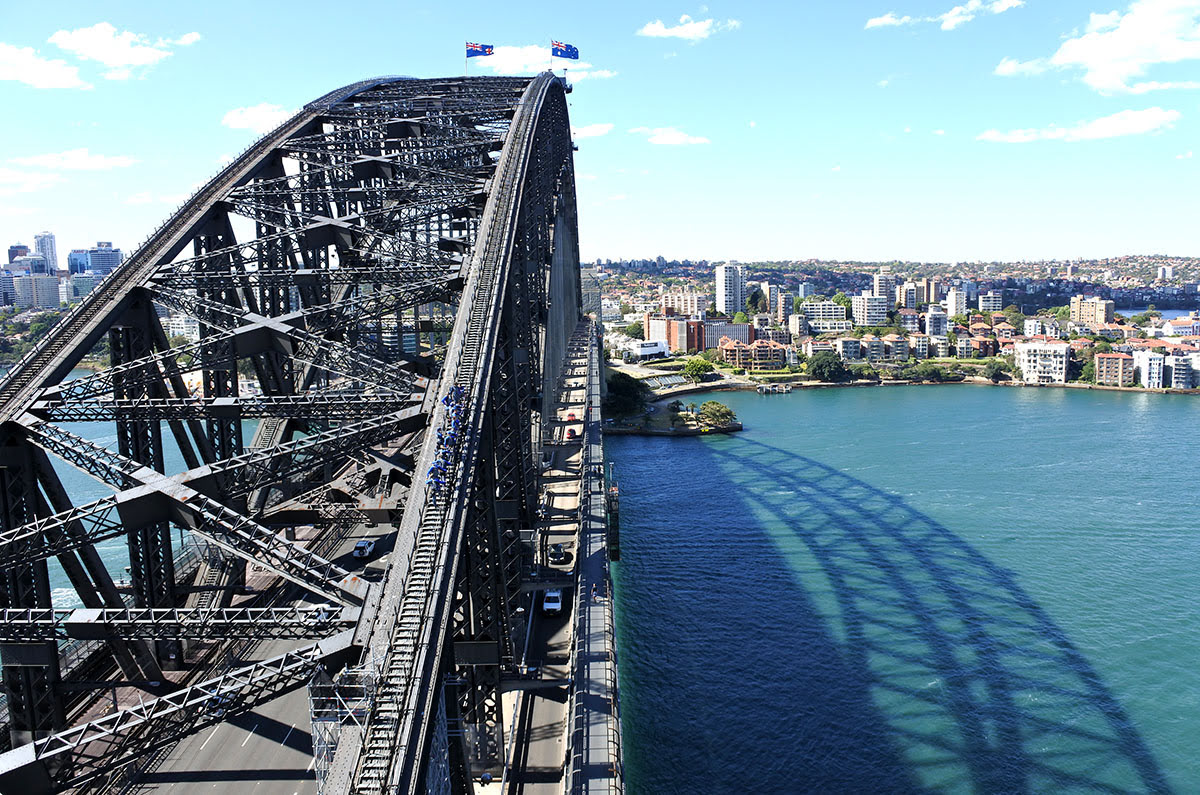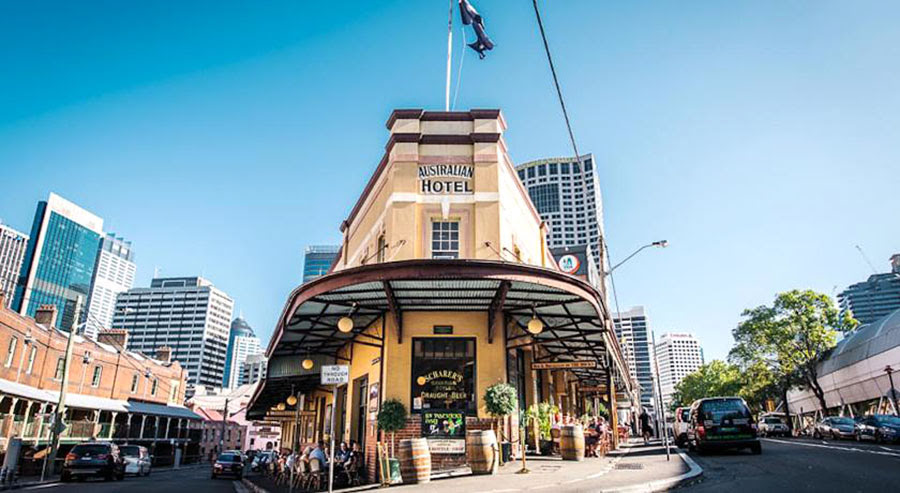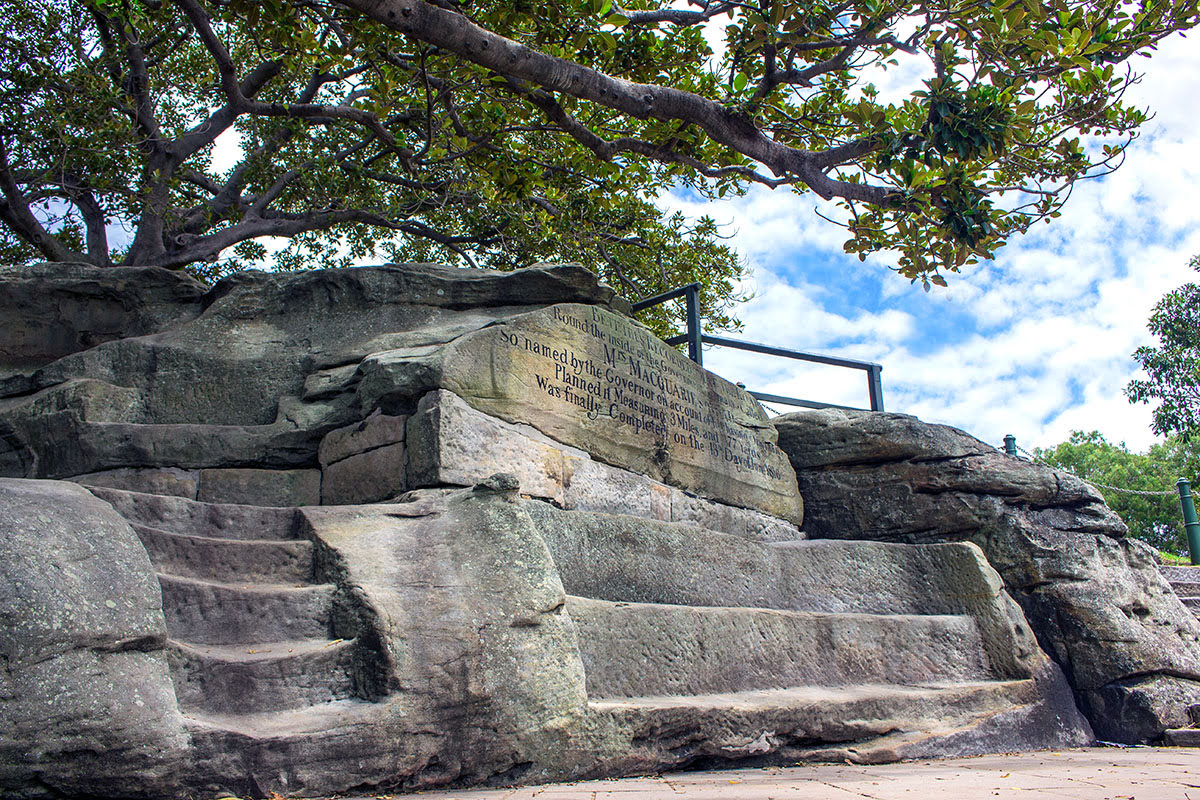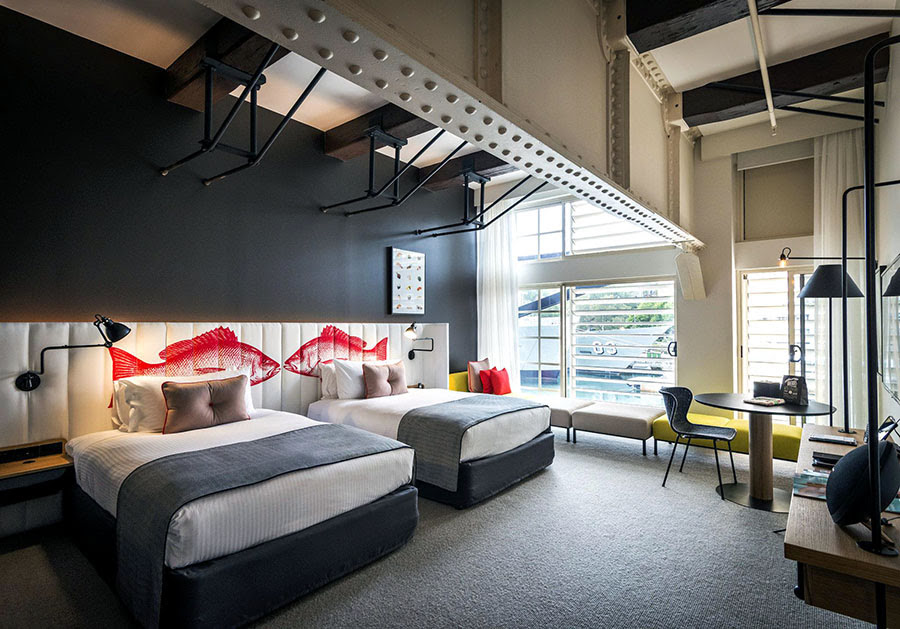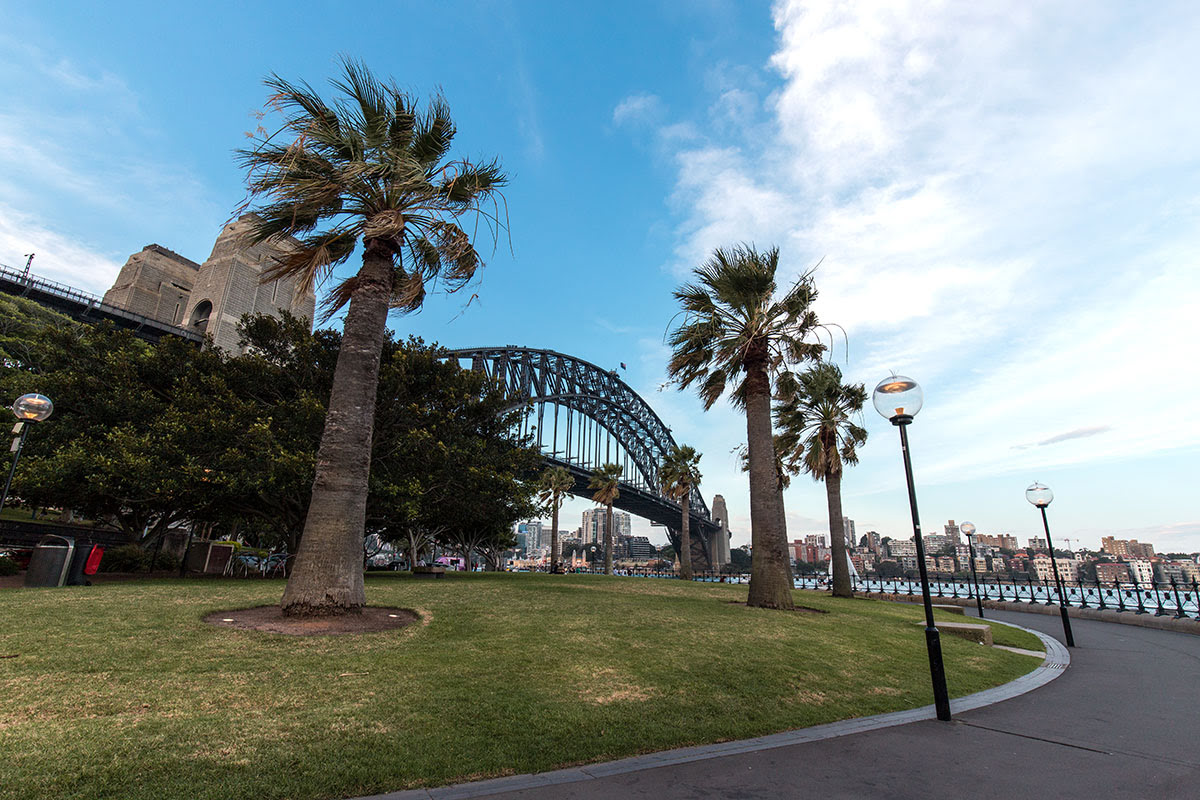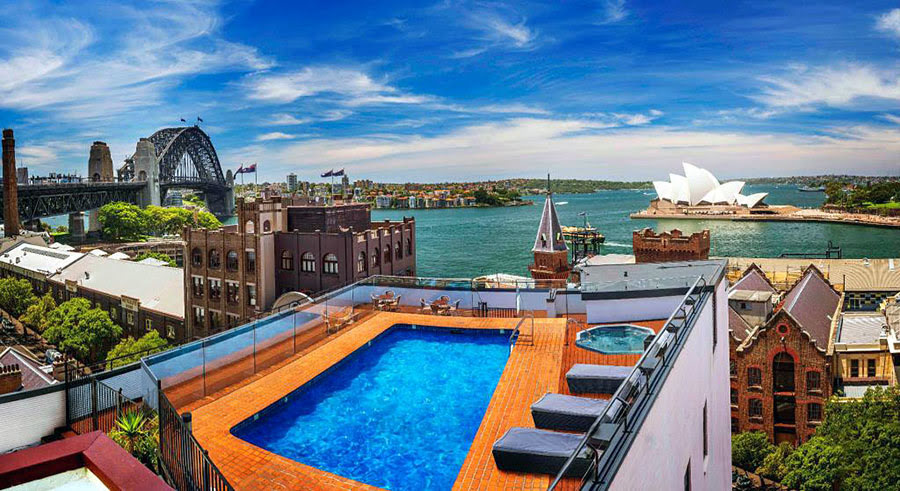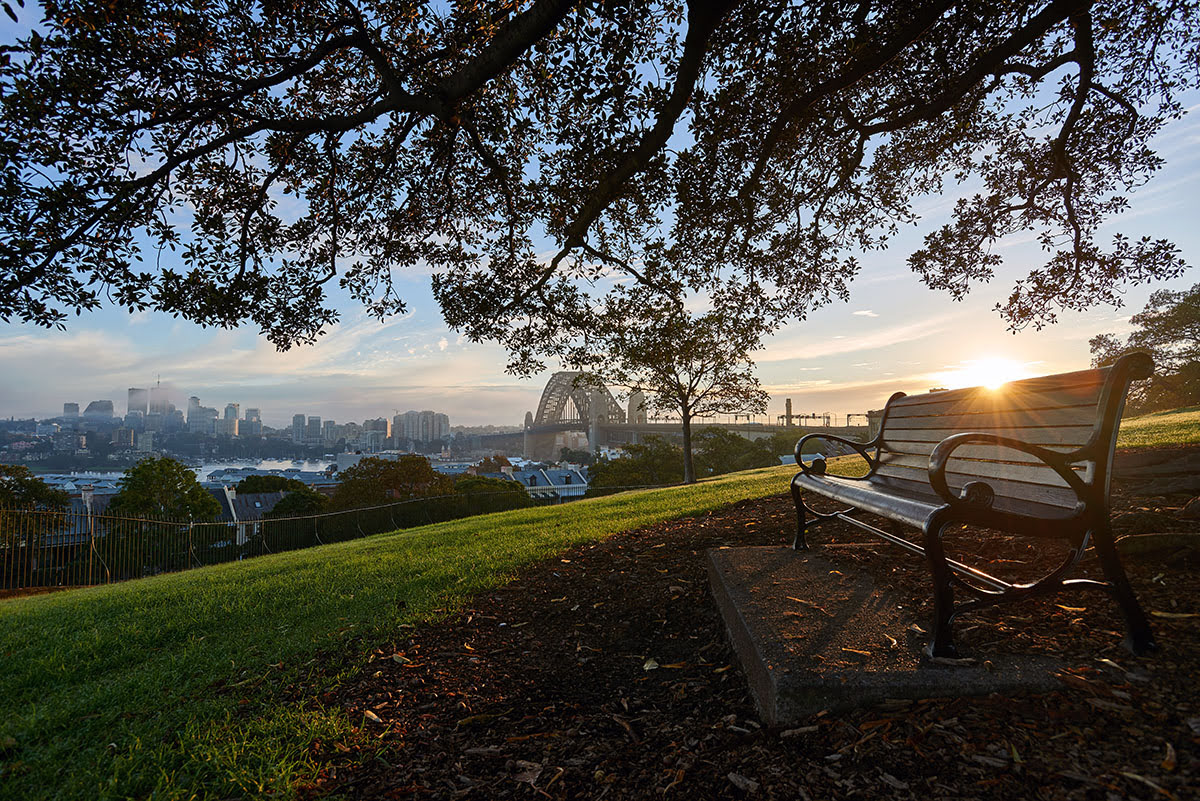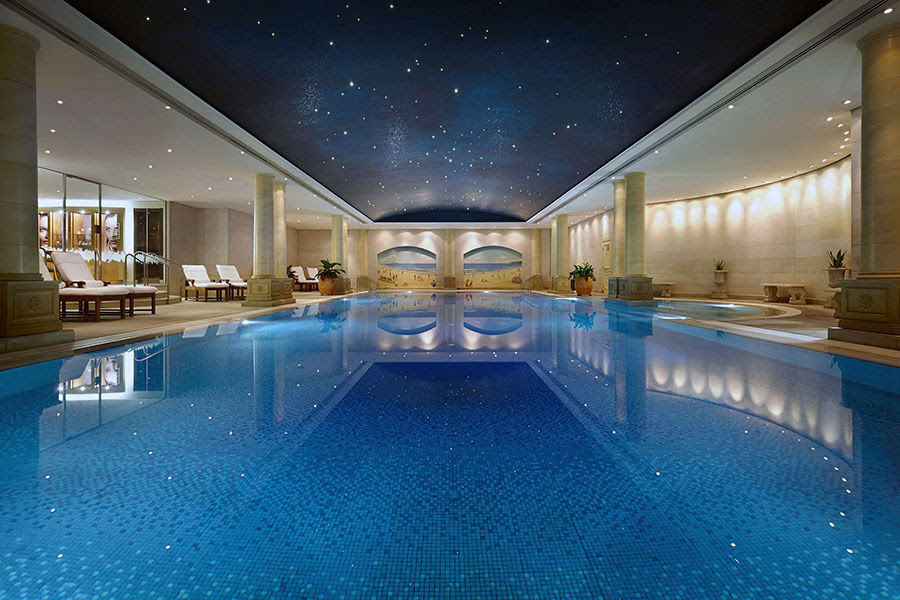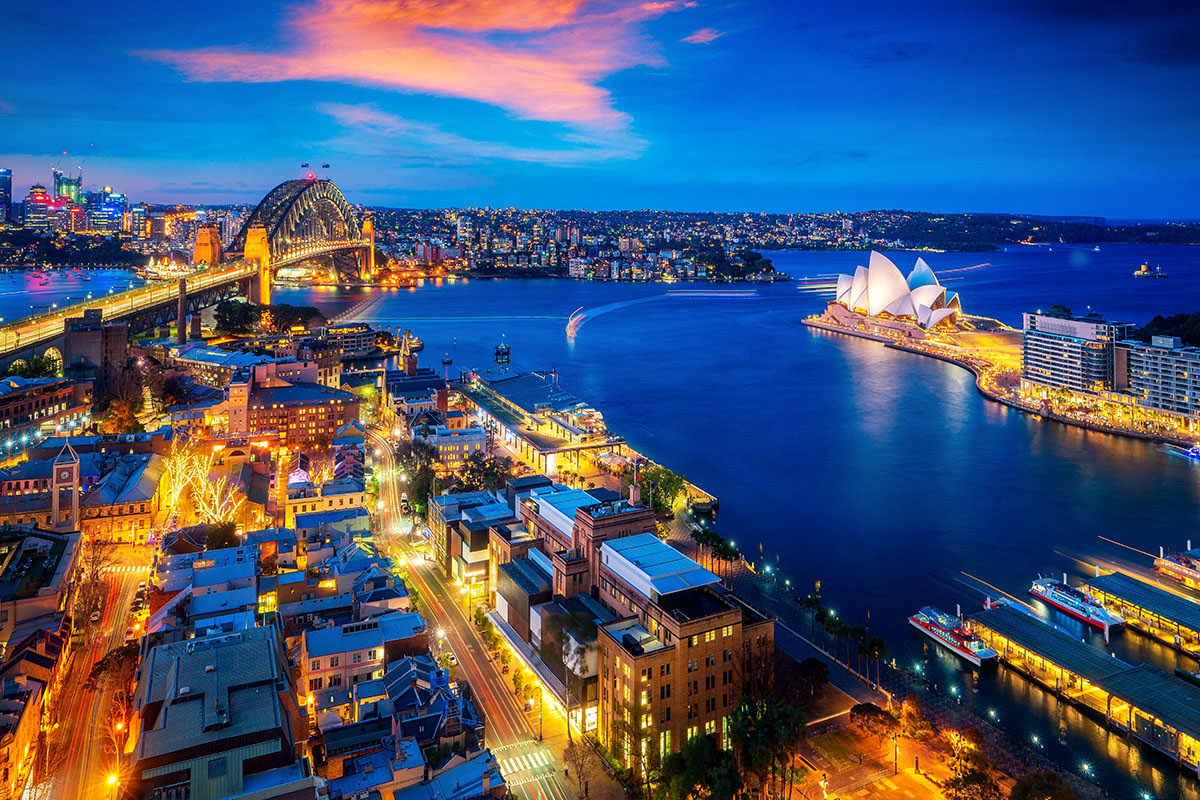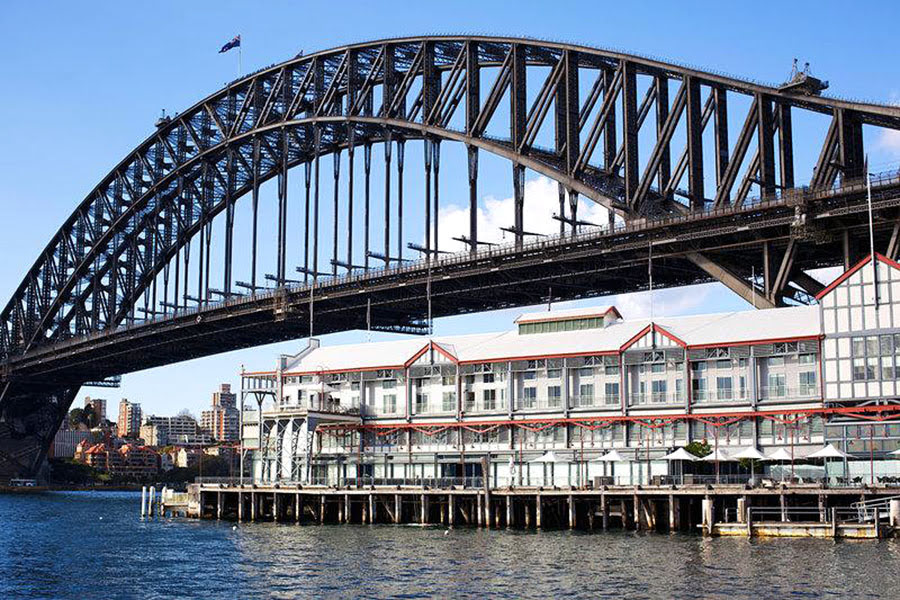Sydney Harbour Bridge | Cost to Climb – Top Hotels & Attractions Nearby

The Sydney Harbour Bridge, along with Sydney Opera House, is an iconic landmark pretty much synonymous with Australia. Standing at 440 feet high, it is the world’s tallest steel arch bridge, and it allows travel between the northern suburbs of Sydney and the city center so that residents don’t have to make the 15-mile drive around the coastline. Over 200,000 vehicles travel the 1,650-foot length span of the bridge over the harbour each day in one of the eight lanes of traffic. The 160-foot wide bridge also has room for two railway lines, a dedicated cycling path, and a footpath. This 39,000-ton steel behemoth has been a world-renowned landmark since it first opened on March 19, 1932. It can carry 6,000 vehicles and 160 trains, withstand hurricane winds of up to 100mph and temperature variations of 120 degrees. Its close proximity to the Sydney Opera House and Darling Harbour makes it one of the most photographed bridges in the world. Known by locals as “The Coat Hanger,” the Sydney Harbour Bridge should be at the top of your Australia bucket list.
A Unique History
The bridge has a unique and interesting history that will help you appreciate all the work that went into this feat of engineering. From the first proposal to the finished product, it took the Sydney Harbour Bridge over 100 years to be completed. By 1904, ferry services were in full swing, transporting commuters coming from the suburbs to the city center. With increased ferry traffic, the city decided that a bridge was needed, so they launched a worldwide design competition. The bridge needed to allow a clearance of 170 feet, be 1,192 feet long, 60 ft wide, and accommodate two railways, two roadways, two tram tracks, and two footpaths.
Doubts and Delays
A man named Norman Self submitted a design for a cantilever bridge, in which the beams are anchored at one end and supported by large towers (granite-based pylons); the design was approved by the government and construction was started. A change in government halted the project for years, and Norman Self never got to see his bridge realized before he died in 1911.
New designers were given a chance to submit proposals. John Jacob Crew Bradfield, a draftsman who worked with Sydney Public Works, understood the demands for the bridge because he himself commuted via Sydney ferry each day. In 1912, when the government decided to take another look at building a bridge, Bradfield was appointed chief engineer, and his design was accepted. However, World War I broke out, and the construction was canceled again.
Construction
After eight years, the government was able to consider the bridge again. Bradfield traveled the world to meet with top bridge-building companies to learn about the latest technology and techniques. Bradfield ended up deciding on an arched bridge instead of the original cantilever bridge design for its strength and cheaper price, and he insisted on the building of the four granite pylons, even though they are for looks only and provide no structural support. They first broke ground in July 1923.
Ralph Freeman, a consultant for the Dorman Long Company in England, and Lawrence Ennis, the chief of construction, assisted with the design, details, and supervision of construction. During the construction, 16 men who were working on the bridge died, two of which died from falling. Otherwise, the bridge was great for Sydney’s economy during the Stock Market crash; the construction kept thousands of people employed and was such a lifesaver during the time that it was nicknamed “The Iron Lung.”
The Opening
In March of 1932, after three weeks of testing, the Sydney Harbour Bridge was finally opened to the public. More than 1 million people made their way across the bridge that day on foot, and Bradfield was the first person to travel across it by car. Having this new bridge reduced the number of ferry passengers each year from 47 million down to 20 million.
Controversies
The construction was controversial as some 500 residential homes on the north shore were purchased by the city and then destroyed to make room for the bridge. On the south shore, the poor citizens of The Rocks were driven from their homes, which were subsequently demolished. Many citizens were upset as they received no compensation.
There was much controversy again after the bridge was built, as Freeman felt he deserved at least half of the credit for the bridge’s design. Bradfield disagreed. Freeman took to the Sydney press, revealing the scandal, and starting a very public feud between the two men. The commemorative plaque on the bridge today chiefly notes Bradfield as the designer but also mentions Freeman as a design consultant.
Check In to Rendezvous Hotel Sydney, The Rocks Step Out to Sydney Harbour Bridge
FIND & BOOK A HOTEL IN SYDNEY TODAY
Climbing the Bridge
For those who want stunning views and an adrenaline rush, Bridge Climb Sydney allows you to go on a guided tour and climb up to the Sydney Harbor Bridge‘s arch. Voted Australia‘s Best Guided Tour for numerous years, it is often sold out, so reserve a couple of weeks in advance. They have climbs for sunrise, during the day, at twilight, and at night, each with their own unique view of Sydney. Unfortunately, you are not allowed to take a camera or phone with you, but they do offer to take your picture at the top, which you can then purchase. The climb has an impeccable safety record — all guests wear safety harnesses attached to a central line, and radios ensure that emergencies can be communicated quickly. Depending on your desire, level of fitness, and available time, there are various options:
Summit – 1390 stairs that take you up to the arch, 134m high (3.5 hours)
- Adult: $268 – $403
- Child: $188 – $293
Summit Express – 1000 stairs that take you up to the arch, 134m (2.5 hours)
- Adult: $268 – $403
- Child: $188 – $293
Sampler – Only to the bridge’s quarter-point (1.5 hours)
- Adult: $174
- Child: $148
The Japanese Climb – Summit Express with Japanese guided tour
- Adult: $308 – $333
- Child: $208 – $333
Mandarin – Summit & Summit Express with Mandarin Chinese guided tour
- Adult: $308
- Child: $208
Special Climbs – Bridge Climb has special climbs such as Vivid Sydney, Climb Then Dine, Canape menus, tours in Australian sign language, and climbs that cater to Japanese and Chinese tourists like a Chinese New Year or Karaoke Climb.
Check In to Sydney Harbour YHA, Step Out to Bridge Climb Sydney
FIND & BOOK A HOTEL IN SYDNEY TODAY
Best spots for photo ops
Whether you’re a hobby photographer, professional, or just want some cool pics for social media, these are some of the best locations around Sydney to grab those Instagram-worthy shots of the Sydney Harbour Bridge.
Pylon Lookout
Instead of spending an arm and a leg to climb to the top of the bridge, opt for the incredible views of Sydney from Pylon Lookout. Costing only 19 AUD, the view from the southeast pylon gives you an intimate and much more affordable experience with the bridge. The pylon is home to the Pylon Lookout Museum, which has educational displays telling the history of the bridge’s construction. There is a 360-degree observation area, and to reach the open-air lookout, you must climb 200 steps to the top of the pylon for incredible panoramas of Sydney.
- General admission (13 years and over) – $19.00
- Concession (valid senior/student) – $12.50
- Children (5-12 years, inclusive) – $9.50
- Children (4 years and under) – Free
Check In to Australian Heritage Hotel, Step Out to Pylon Lookout
FIND & BOOK A HOTEL IN SYDNEY TODAY
Mrs. Macquarie’s Chair
If you want the quintessential photograph of Sydney, featuring both the Sydney Harbour Bridge and the Sydney Opera House, Mrs. Macquarie’s Chair is the closest location where you can get an incredible view of both the Opera House and the Bridge in the same frame. It’s a chair made out of sandstone, hand-carved by in 1810 by convicts for the Governor’s wife. Located at the furthest point of the Botanical Gardens, this location is a population spot for photographers and busloads of tourists. So while it might be hard to get your Instagram-worthy selfie shots, you can still get some beautiful landscapes.
Check In to Ovolo Woolloomooloo Hotel, Step Out to Mrs. Macquarie’s Chair
FIND & BOOK A HOTEL IN SYDNEY TODAY
Hickson Road Reserve
Hickson Road Reserve is located in The Rocks, on the south end of the bridge. Along the waterfront is Dawes Point Park, which offers incredible shots of the massive Sydney Harbour Bridge. This is where you can really get up-close and personal with the bridge and take some great selfies. You can also see the Opera House from here, but it will be hard to capture both by camera.
Check In to Ridges Sydney Harbour, Step Out to Hickson Road Reserve
FIND & BOOK A HOTEL IN SYDNEY TODAY
Observatory Hill
If you’re looking for a spot that’s a little off the beaten path and not overrun with tourists, Observatory Hill is the place. Located behind the south side neighborhood of The Rocks, Observatory Hill is a park with a rotunda and tennis courts that is on top of a small hill (duh!) and is an excellent spot for sunrise photos of the bridge and Sydney. The hill only takes 5-10 minutes to climb, but because of this, there are fewer people there. Best of all, it’s free.
Check In to The Langham Sydney Hotel, Step Out to Observatory Hill
FIND & BOOK A HOTEL IN SYDNEY TODAY
Other Great Photo Spots
- Kirribilli, a prominent and wealthy suburb to the north of the business district
-
Luna Park, Sydney’s best amusement park located on the northern shore
-
Circular Quay train station, an elevated commuter rail station close to the ferry terminal
-
The MacCallum Pool, Cremorne Point, a free public swimming pool on the harbour
-
North Sydney Olympic Pool, a harbourside swimming pool and exercise complex
Check In to Pier One Sydney Harbour, Autograph Collection, Step Out to Sydney Harbour Bridge
You may also like

Join us as we explore the Royal Ploughing Ceremony, a cornerstone of Thai culture symbolizing the start of the planting season. Experience the beauty and rituals that make this event a must-see for cultural enthusiasts and travelers alike.
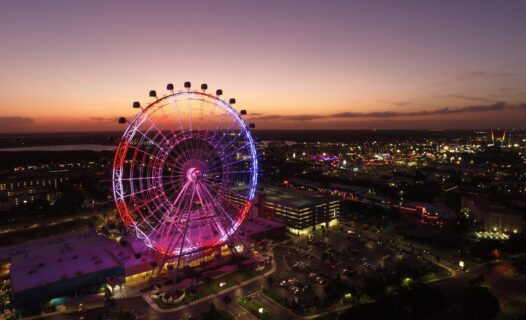
Embark on a culinary adventure in Orlando! From exquisite fine dining and vibrant food trucks to sustainable eats and lively festivals, discover the flavors that make Orlando a foodie's paradise.
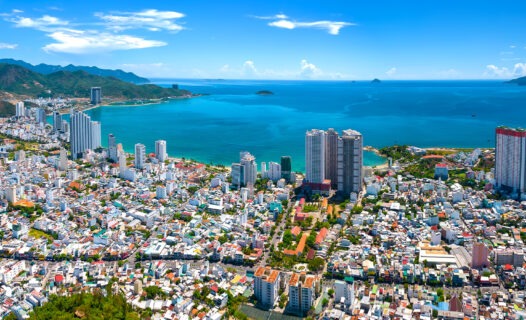
Dive into the ultimate Nha Trang shopping adventure! Explore bustling markets, chic boutiques, eco-friendly finds, and seasonal events in our detailed guide.
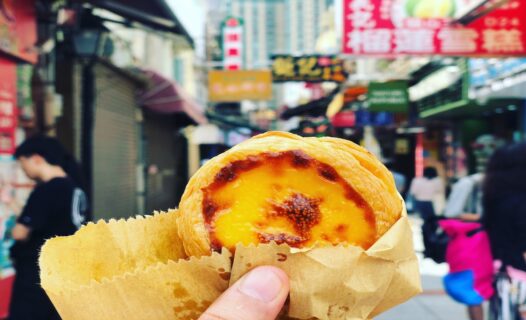
Embark on a culinary journey through Macau with our ultimate guide to its fusion flavors. Discover traditional dishes, insider dining tips, and vibrant food festivals that celebrate the best of Macanese cuisine.
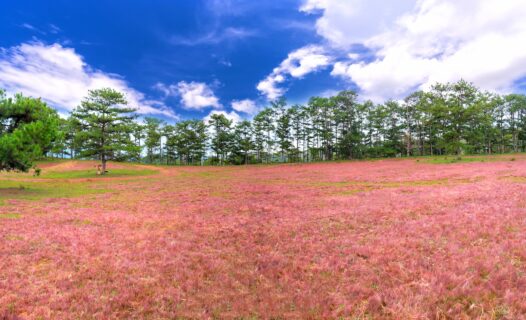
Dive into our captivating 3-Day Dalat Itinerary to uncover Vietnam's highlands gem. From serene lakes to historic sites, embrace adventure & relaxation in Dalat.
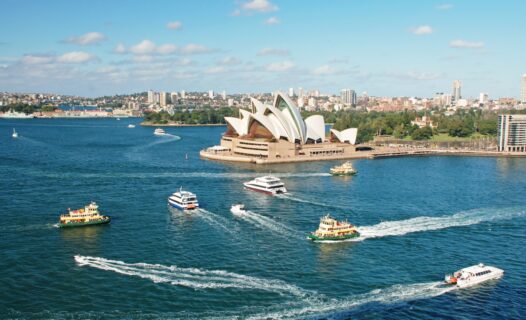
Embark on a captivating 7-day journey through Sydney, Australia. From iconic landmarks like the Opera House to the serene Blue Mountains and vibrant Darling Harbour, discover the best attractions the Harbour City has to offer.
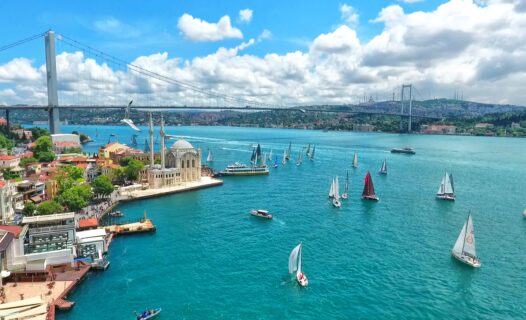
Embark on a captivating 5-day journey through Istanbul, exploring historic wonders and cultural gems. Discover itineraries filled with majestic palaces, vibrant bazaars, and scenic cruises.

Embark on a delectable journey through Goa's culinary landscape with our comprehensive guide. Discover traditional Goan cuisine's fusion of flavors, from spicy vindaloos to sweet bebinca, and dive into local culture through markets, cooking classes, and sustainable dining.
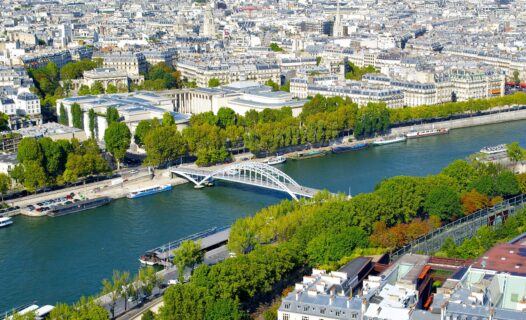
Discover the charm of Paris' arrondissements with our ultimate travel guide. From the historic heart of the city to hidden gems, find the perfect stay for every traveler.
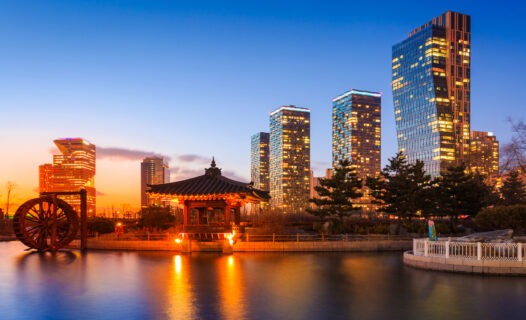
Uncover the best of Incheon in 5 days, from awe-inspiring historic sites to state-of-the-art modern marvels. Indulge in cultural tours, culinary delights, and breathtaking scenery.
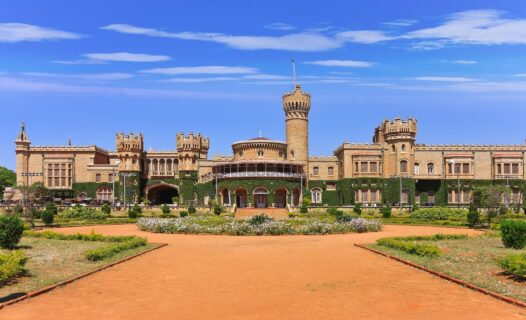
Dive into our 3 Days in Bangalore Itinerary to uncover the best of the Garden City. From royal palaces to tech hubs, enjoy a blend of culture, history, and nature.
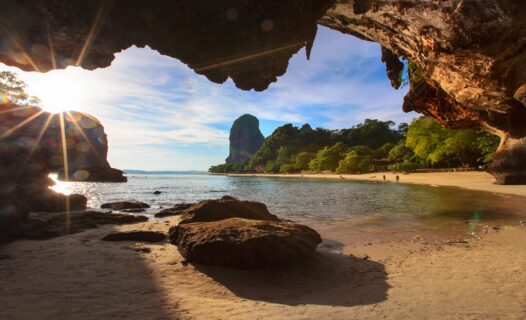
Dive into our exclusive 7-Day Krabi Itinerary on Agoda’s Travel Guide. Discover pristine beaches, lush jungles, and cultural treasures in Thailand's paradise.
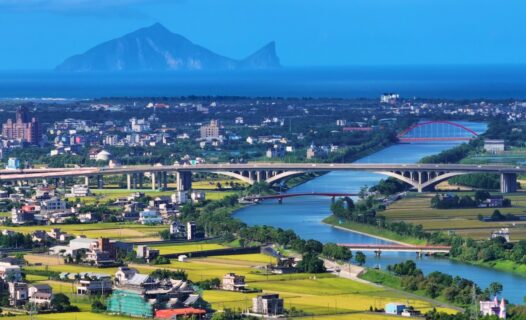
Embark on an extraordinary weekend getaway in Yilan with our curated itinerary. Discover lush landscapes, soak in natural hot springs, and indulge in local culinary delights.
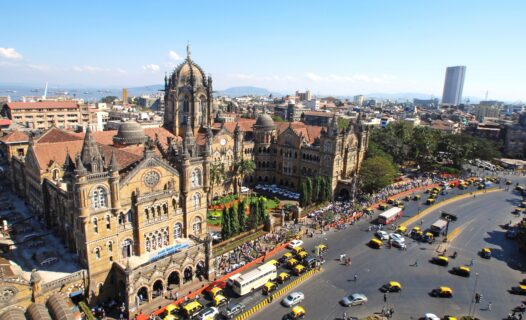
Dive into Mumbai's vibrant culture, history, and flavors with our detailed 3-day itinerary. Discover iconic landmarks, hidden gems, and culinary delights.
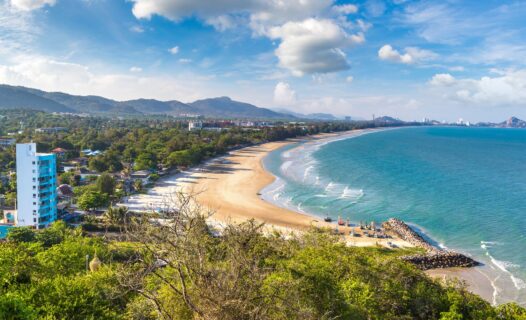
Embark on a 7-day journey through Hua Hin/Cha-am with our expertly crafted itinerary. Discover pristine beaches, royal palaces, and hidden gems.
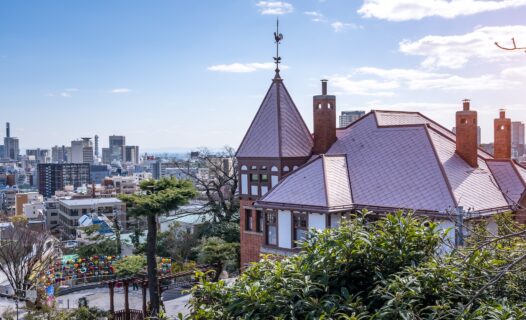
Embark on a captivating 3-day journey through Kobe, Japan. From historical landmarks to scenic beauty, discover the best of Kobe.
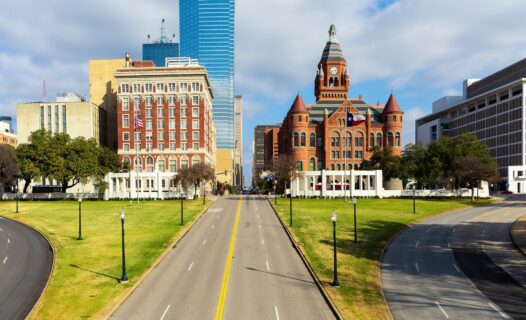
Uncover the best of Dallas with our exclusive 3-day itinerary. From iconic landmarks to hidden gems, discover why Dallas, TX, is a must-visit destination.
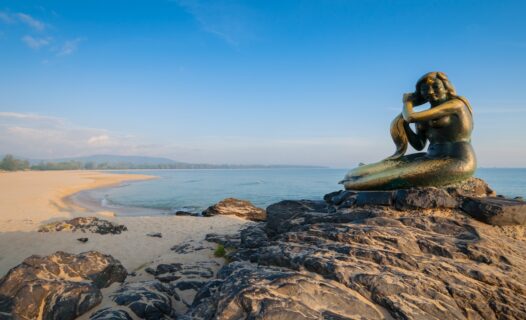
Discover the best of Hat Yai with our 5-day itinerary. From bustling markets to serene temples, experience the hidden gems of Southern Thailand.

Dive into our 5-day Nha Trang itinerary designed for adventure seekers! From island-hopping to scuba diving and cultural wonders, discover the best of Nha Trang with our expert guide.
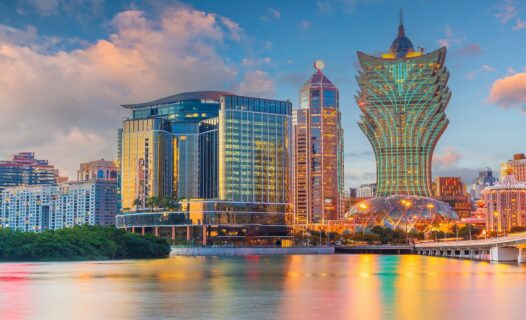
Dive into our engaging 3-Day Macau Itinerary to uncover the vibrant mix of history, culture, and exhilaration in Asia's Vegas.

Dive into Ipoh's culinary paradise with our 3-day food lover's guide! Discover the best eats, hidden cafes, and cultural delights in Malaysia's gastronomic haven.

The Sydney Harbour Bridge, along with Sydney Opera House, is an iconic landmark pretty much synonymous with Australia. Standing at 440 feet high, it is the world’s tallest steel arch bridge, and it allows travel between the northern suburbs of Sydney and the city center so that residents don’t have to make the 15-mile drive around the coastline. Over 200,000 vehicles travel the 1,650-foot length span of the bridge over the harbour each day in one of the eight lanes of traffic. The 160-foot wide bridge also has room for two railway lines, a dedicated cycling path, and a footpath. This 39,000-ton steel behemoth has been a world-renowned landmark since it first opened on March 19, 1932. It can carry 6,000 vehicles and 160 trains, withstand hurricane winds of up to 100mph and temperature variations of 120 degrees. Its close proximity to the Sydney Opera House and Darling Harbour makes it one of the most photographed bridges in the world. Known by locals as “The Coat Hanger,” the Sydney Harbour Bridge should be at the top of your Australia bucket list.
A Unique History
The bridge has a unique and interesting history that will help you appreciate all the work that went into this feat of engineering. From the first proposal to the finished product, it took the Sydney Harbour Bridge over 100 years to be completed. By 1904, ferry services were in full swing, transporting commuters coming from the suburbs to the city center. With increased ferry traffic, the city decided that a bridge was needed, so they launched a worldwide design competition. The bridge needed to allow a clearance of 170 feet, be 1,192 feet long, 60 ft wide, and accommodate two railways, two roadways, two tram tracks, and two footpaths.
Doubts and Delays
A man named Norman Self submitted a design for a cantilever bridge, in which the beams are anchored at one end and supported by large towers (granite-based pylons); the design was approved by the government and construction was started. A change in government halted the project for years, and Norman Self never got to see his bridge realized before he died in 1911.
New designers were given a chance to submit proposals. John Jacob Crew Bradfield, a draftsman who worked with Sydney Public Works, understood the demands for the bridge because he himself commuted via Sydney ferry each day. In 1912, when the government decided to take another look at building a bridge, Bradfield was appointed chief engineer, and his design was accepted. However, World War I broke out, and the construction was canceled again.
Construction
After eight years, the government was able to consider the bridge again. Bradfield traveled the world to meet with top bridge-building companies to learn about the latest technology and techniques. Bradfield ended up deciding on an arched bridge instead of the original cantilever bridge design for its strength and cheaper price, and he insisted on the building of the four granite pylons, even though they are for looks only and provide no structural support. They first broke ground in July 1923.
Ralph Freeman, a consultant for the Dorman Long Company in England, and Lawrence Ennis, the chief of construction, assisted with the design, details, and supervision of construction. During the construction, 16 men who were working on the bridge died, two of which died from falling. Otherwise, the bridge was great for Sydney’s economy during the Stock Market crash; the construction kept thousands of people employed and was such a lifesaver during the time that it was nicknamed “The Iron Lung.”
The Opening
In March of 1932, after three weeks of testing, the Sydney Harbour Bridge was finally opened to the public. More than 1 million people made their way across the bridge that day on foot, and Bradfield was the first person to travel across it by car. Having this new bridge reduced the number of ferry passengers each year from 47 million down to 20 million.
Controversies
The construction was controversial as some 500 residential homes on the north shore were purchased by the city and then destroyed to make room for the bridge. On the south shore, the poor citizens of The Rocks were driven from their homes, which were subsequently demolished. Many citizens were upset as they received no compensation.
There was much controversy again after the bridge was built, as Freeman felt he deserved at least half of the credit for the bridge’s design. Bradfield disagreed. Freeman took to the Sydney press, revealing the scandal, and starting a very public feud between the two men. The commemorative plaque on the bridge today chiefly notes Bradfield as the designer but also mentions Freeman as a design consultant.
Check In to Rendezvous Hotel Sydney, The Rocks Step Out to Sydney Harbour Bridge
FIND & BOOK A HOTEL IN SYDNEY TODAY
Climbing the Bridge
For those who want stunning views and an adrenaline rush, Bridge Climb Sydney allows you to go on a guided tour and climb up to the Sydney Harbor Bridge‘s arch. Voted Australia‘s Best Guided Tour for numerous years, it is often sold out, so reserve a couple of weeks in advance. They have climbs for sunrise, during the day, at twilight, and at night, each with their own unique view of Sydney. Unfortunately, you are not allowed to take a camera or phone with you, but they do offer to take your picture at the top, which you can then purchase. The climb has an impeccable safety record — all guests wear safety harnesses attached to a central line, and radios ensure that emergencies can be communicated quickly. Depending on your desire, level of fitness, and available time, there are various options:
Summit – 1390 stairs that take you up to the arch, 134m high (3.5 hours)
- Adult: $268 – $403
- Child: $188 – $293
Summit Express – 1000 stairs that take you up to the arch, 134m (2.5 hours)
- Adult: $268 – $403
- Child: $188 – $293
Sampler – Only to the bridge’s quarter-point (1.5 hours)
- Adult: $174
- Child: $148
The Japanese Climb – Summit Express with Japanese guided tour
- Adult: $308 – $333
- Child: $208 – $333
Mandarin – Summit & Summit Express with Mandarin Chinese guided tour
- Adult: $308
- Child: $208
Special Climbs – Bridge Climb has special climbs such as Vivid Sydney, Climb Then Dine, Canape menus, tours in Australian sign language, and climbs that cater to Japanese and Chinese tourists like a Chinese New Year or Karaoke Climb.
Check In to Sydney Harbour YHA, Step Out to Bridge Climb Sydney
FIND & BOOK A HOTEL IN SYDNEY TODAY
Best spots for photo ops
Whether you’re a hobby photographer, professional, or just want some cool pics for social media, these are some of the best locations around Sydney to grab those Instagram-worthy shots of the Sydney Harbour Bridge.
Pylon Lookout
Instead of spending an arm and a leg to climb to the top of the bridge, opt for the incredible views of Sydney from Pylon Lookout. Costing only 19 AUD, the view from the southeast pylon gives you an intimate and much more affordable experience with the bridge. The pylon is home to the Pylon Lookout Museum, which has educational displays telling the history of the bridge’s construction. There is a 360-degree observation area, and to reach the open-air lookout, you must climb 200 steps to the top of the pylon for incredible panoramas of Sydney.
- General admission (13 years and over) – $19.00
- Concession (valid senior/student) – $12.50
- Children (5-12 years, inclusive) – $9.50
- Children (4 years and under) – Free
Check In to Australian Heritage Hotel, Step Out to Pylon Lookout
FIND & BOOK A HOTEL IN SYDNEY TODAY
Mrs. Macquarie’s Chair
If you want the quintessential photograph of Sydney, featuring both the Sydney Harbour Bridge and the Sydney Opera House, Mrs. Macquarie’s Chair is the closest location where you can get an incredible view of both the Opera House and the Bridge in the same frame. It’s a chair made out of sandstone, hand-carved by in 1810 by convicts for the Governor’s wife. Located at the furthest point of the Botanical Gardens, this location is a population spot for photographers and busloads of tourists. So while it might be hard to get your Instagram-worthy selfie shots, you can still get some beautiful landscapes.
Check In to Ovolo Woolloomooloo Hotel, Step Out to Mrs. Macquarie’s Chair
FIND & BOOK A HOTEL IN SYDNEY TODAY
Hickson Road Reserve
Hickson Road Reserve is located in The Rocks, on the south end of the bridge. Along the waterfront is Dawes Point Park, which offers incredible shots of the massive Sydney Harbour Bridge. This is where you can really get up-close and personal with the bridge and take some great selfies. You can also see the Opera House from here, but it will be hard to capture both by camera.
Check In to Ridges Sydney Harbour, Step Out to Hickson Road Reserve
FIND & BOOK A HOTEL IN SYDNEY TODAY
Observatory Hill
If you’re looking for a spot that’s a little off the beaten path and not overrun with tourists, Observatory Hill is the place. Located behind the south side neighborhood of The Rocks, Observatory Hill is a park with a rotunda and tennis courts that is on top of a small hill (duh!) and is an excellent spot for sunrise photos of the bridge and Sydney. The hill only takes 5-10 minutes to climb, but because of this, there are fewer people there. Best of all, it’s free.
Check In to The Langham Sydney Hotel, Step Out to Observatory Hill
FIND & BOOK A HOTEL IN SYDNEY TODAY
Other Great Photo Spots
- Kirribilli, a prominent and wealthy suburb to the north of the business district
-
Luna Park, Sydney’s best amusement park located on the northern shore
-
Circular Quay train station, an elevated commuter rail station close to the ferry terminal
-
The MacCallum Pool, Cremorne Point, a free public swimming pool on the harbour
-
North Sydney Olympic Pool, a harbourside swimming pool and exercise complex
Check In to Pier One Sydney Harbour, Autograph Collection, Step Out to Sydney Harbour Bridge
You may also like
